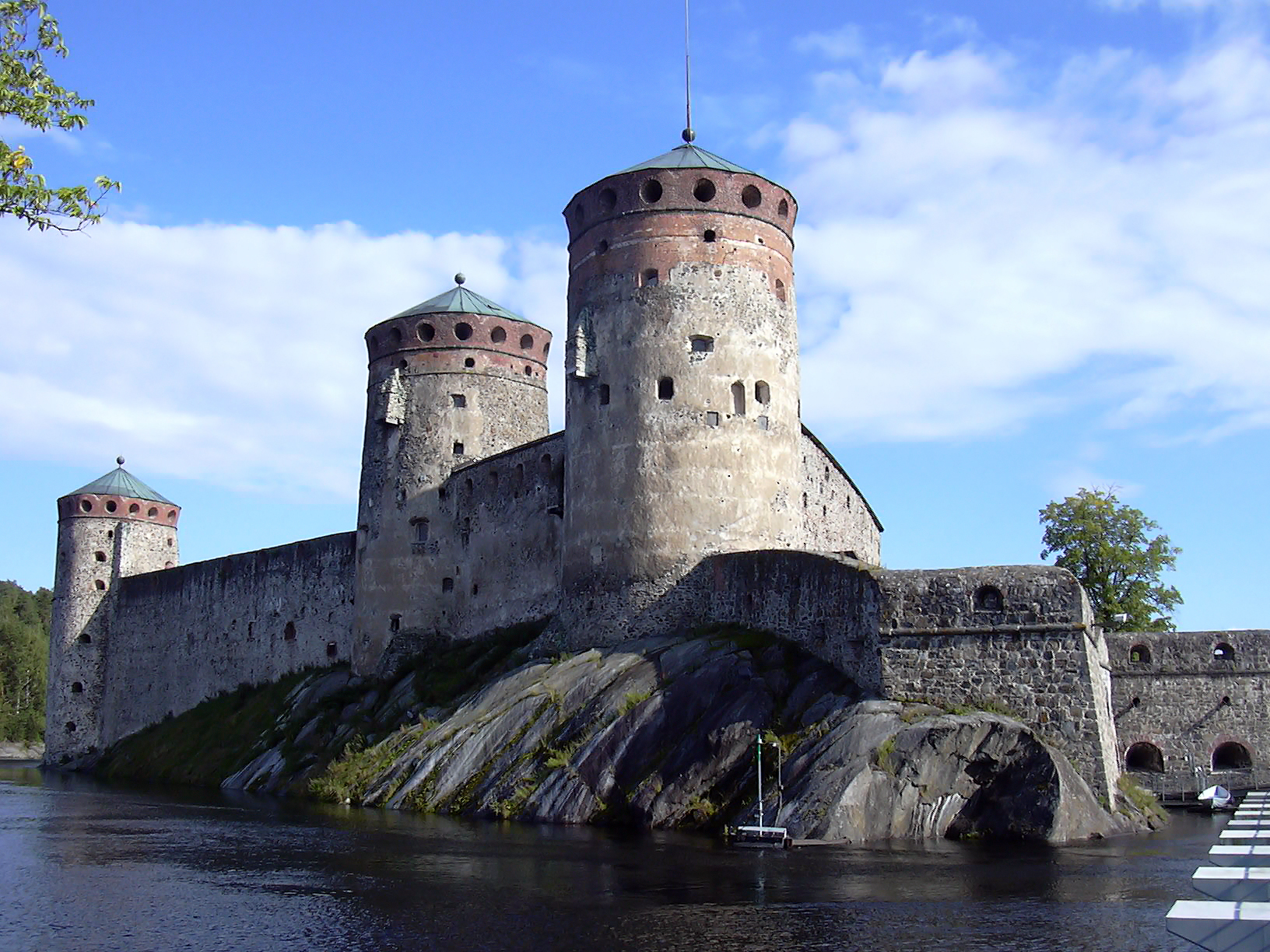Olavinlinna (Swedish: "Olofsborg") or
St. Olaf's Castle is a 15th century castle located on a rocky island between the
lakes Haapavesi and Pihlajavesi connected to the Bay of Lake Saimaa in northern
Finland in Savonlinna Provincial Cham.
 |
| Attribution: Miraceti, License |
Construction of the
castle was begun in 1475 by the Danish Knight Erik Axelsson Tott, who had
engaged in strengthening the Vyborg Castle. Erik Axelsson Tott decided that the
powerful fortification should be build to protect the strategically important
Savo region. The castle was supposed to repel Russian attacks from the east and
to guarantee the control of the Savo region for the Swedish Crown. Initially,
the castle was named Nyslott (Swedish:
New Castle), then it was named Olavinlinna, Castle of St. Olaf, in honor of the
Catholic saint of the 11th century, especially in Scandinavia revered as the
patron saint of the Knights.







